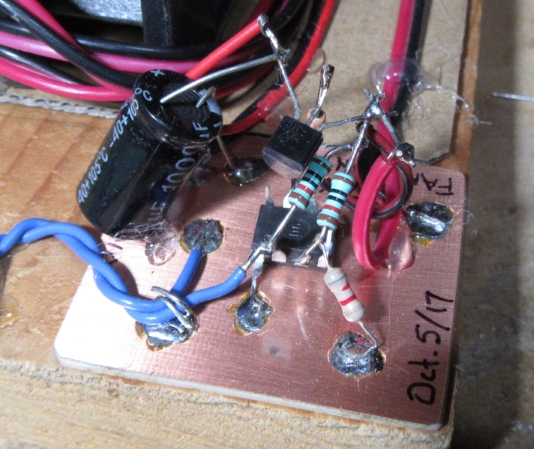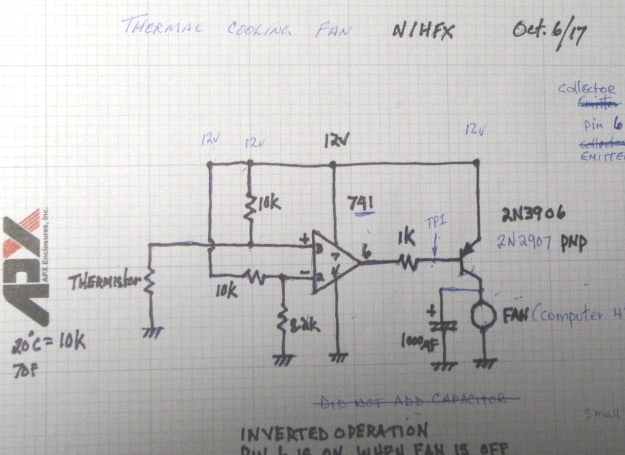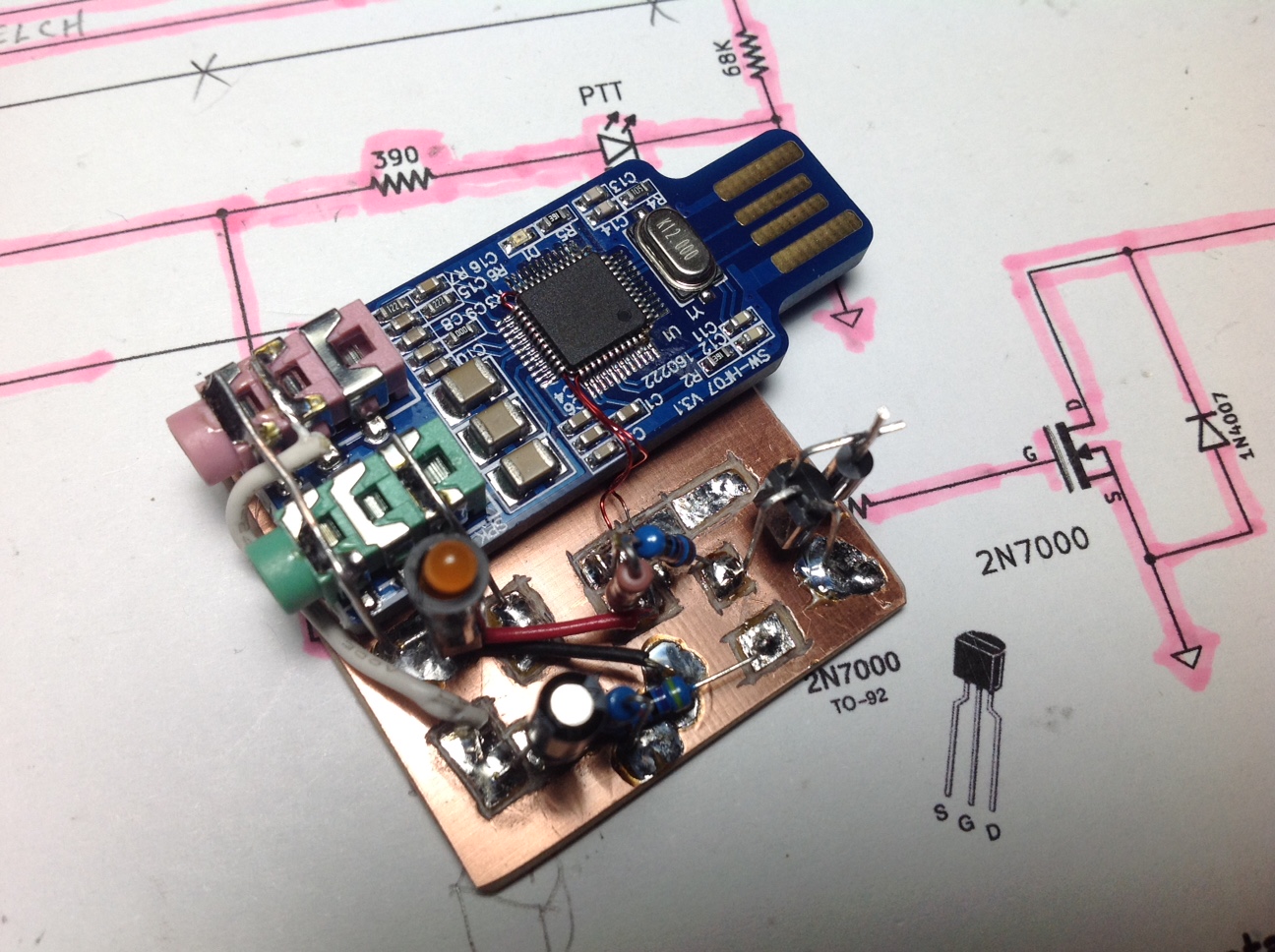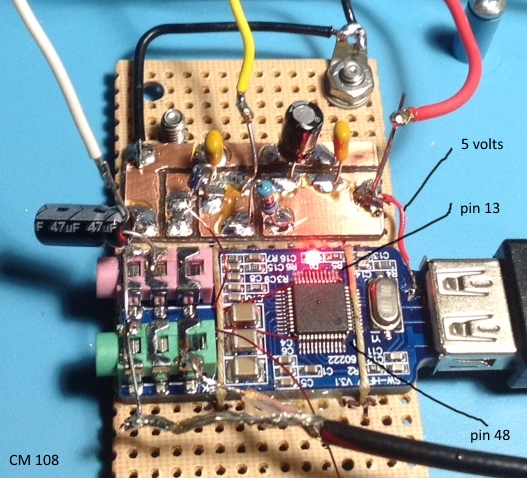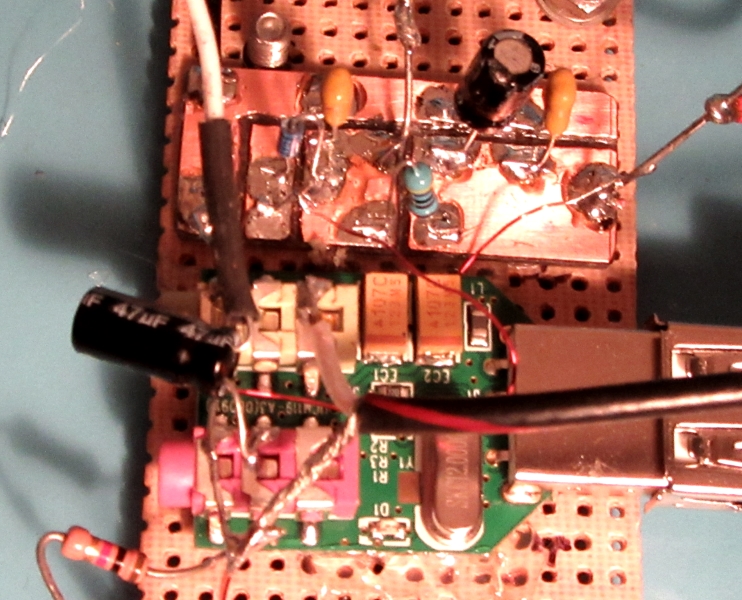|
Allstar provides local and world wide coverage, using your existing fm gear, and can also be used to link other nodes and repeaters. It can be run as a radioless node, with nothing more than a rasberry pi, and an Android phone running DV Switch, or by using just a dtmf mic, a speaker, a usb sound fob, and a Raspberry Pi. You can run mobile, using your cell phone as an access point, and stay connected to any Allstar node, or Allstar enabled repeater, anywhere! Doug Crompton's (WA3DSP) page www.hamvoip.org has all the information you need. I built an Allstar node, using a Raspberry Pi 3 (rpi3), a sound fob, and a Yaesu 2600 mobile. Running 5 watts to a ringo antenna, gave me good coverage across town, allowing me access via handheld or mobile. The node radio can be quite active at times, and will run at 100% duty cycle. It needs a fan to keep it cool. I built a thermister circuit to control the fan. If the heat sink increased a degree or two, the fan comes on. This is the bracket I built, to keep the node radio cool. The fan mounted under the radio, did not work as well as expected. This picture shows a much better cooling arrangement, with the fan positioned right at the back of the radio. The thermistor, epoxied to the cooling bracket, can be seen on the left. The circuit I used is a comparator, using a 741 op amp, in conjunction with a transistor and a thermistor to control the fan. As the temperature goes up, the thermistor resistance goes down.
Here is the fan control schematic - (inverted operation) - pin 6 is on, when the fan is off.
This is the modified sound fob, along side the little board I made for the connections. To make connection to pins 13 and 48, I used magnet wire, the same wire I use for winding toroids. #30 awg was the size I used. This is what my node looked like, after I changed it to a radioless node. It consists of an RPi3, a sound fob, a speaker, and a dtmf mic. Mic connections to the fob, are through the little interface board. 5 volts, gnd, ptt and audio. One observation using these soundcards - the CM 108 worked well with the node radio, but it refused to work with the radioless node. As soon as I switched to the CM 119, it started working right away! So if you are going to modify a soundcard fob, I recommend the CM 119. Mine is branded SYBA. The fob in this picture, is the cm 108. This is the SYBA CM 119. It is smaller in length, and the 48 pin chip, is on the bottom side of the board. Here is the nodes list. Here is the samelist , but includes the inactive nodes. You can register for Allstar here. The first thing you need to do, is sign up, to receive a password via e-mail. Then you can request a node number. The Canada Hub Node # 517300, has a weekly Cross Canada Net, on Sundays at 2:00 pm atlantic time. FreeStar has numerous activities (nets) on 2195, and the UK HubNet is on 41522.
|


